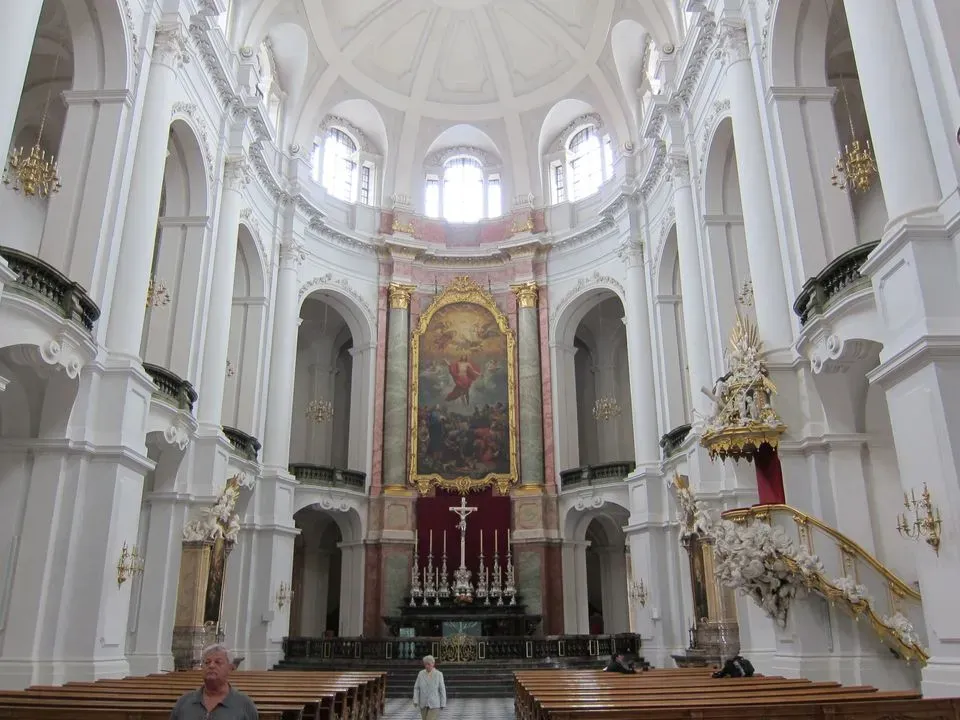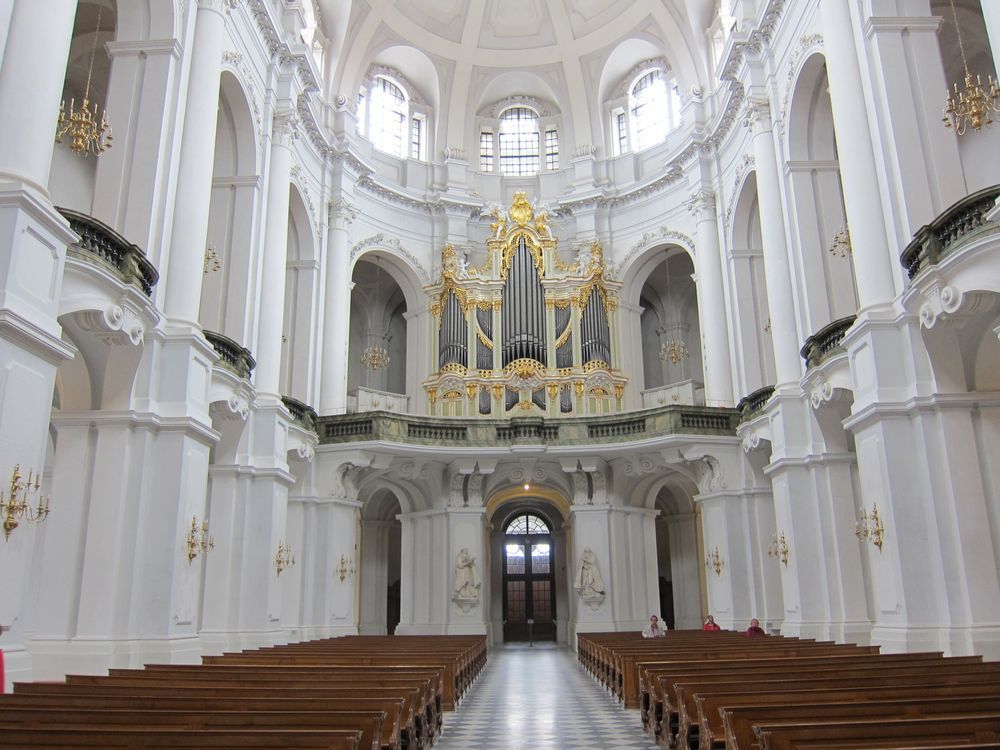A Remembrance and Some History: Dresden, June 10, 2013
A story of a building and an instrument

There was a day (06/10), ten years ago today, on the 2013 choir trip where the choir had a day-trip to Leipzig while Robert and I stayed behind in Dresden – the choir was singing a concert in the Kreuzkirche that evening; he needed to practice. We had a schedule of times – a few hours in the morning and in the afternoon. He could not spend the entire day, as he wished, because of other scheduled functions. After the morning session, he and I did our own walking tour of Dresden that day. This was my third trip to Dresden, and Robert and I had been there just three years prior (in the dead of winter, I might add). One of our stops was the Katholische Hofkirche. Robert had been there some years before (1996) and had the opportunity to play the Silbermann Organ there.
One of the more spectacular reconstructions in the Innere Altstadt/Schlossplatz is the Katholische Hofkirche. (The nearby Frauenkirche is the most dramatic reconstruction in the area, but that is a story for another day.) The Hofkirche is attached, via third floor, overground passage, to the Residenzschloss (the royal residence). The Hofkirche, as the name implies, was originally built as the court church. It was only elevated to concathedral status in 1964, but did not fully take on cathedral status until 1980 when the bishopric was relocated to the Dresden-Meissen diocese. As the court church, it was not open to the public; also, at the time, public Catholic celebrations were not permitted in Saxony.
The church was constructed in the mid-1750s – at the tail-end of the Baroque period. The building has a unique construction – it is not cruciform, but rather a two-tiered oval structure (the upper tier being smaller so it looks like an oval wedding cake). As a result, the central nave is free-standing, as is the tower. Both tiers have balustrades that are topped with statues at the columns. There are 78 statues on the balustrades. I bought a guide on my first trip to Dresden (2000) that tells the names and positions of the figures. (That would be a great Trivia Night question (or questions), how many figures are represented on the balustrades of the Cathedral of the Saints of the Trinity (its actual consecrated name – Kathedral Ss. Trinitas)).
Part of the reason for its shape is that public Catholic worship, of any kind, was forbidden in Protestant Saxony, therefore the processional would wind around the nave and never be seen outside the building. Even though the church was built in the Baroque style, the interior was whitewashed, not decorated with gilding and faux-marble effects except for the high altar area. (I assumed, before I knew better, that the white interior was a result of the reconstruction – many reconstructions did not replicate the ornate interiors of their former selves.) As a side note, the acoustic is amazing, live, reverberant, and clear (unlike some of the cavernous rooms in Europe with loads of reverb that becomes a sonic soup when the organ is playing).
WWII took its toll on Dresden. Whether or not the attack was justified, I will leave to the historians and analysts, but the bombings and the firestorm destroyed most of the old town (without any real military purpose, in my opinion). The Hofkirche was heavily damaged, and the Residenzschloss was practically leveled. I mention this because Dresden was one of the last cities to be rebuilt. It is interesting that the Hofkirche did not collapse into itself even though it was directly hit. Contrary to beliefs at the time, the Frauenkirche was not bombed, but collapsed from the percussions of the bombing all around it (and poor architectural design). It has been proven that the Frauenkirche would have collapsed on its own eventually, but that is another story.
The Hofkirche houses a very important pipe organ, one of only four existing instruments built by Gottfried Silbermann. In 1944, under suspicion of attack, the pipework, manuals and action were removed from the instrument. The case and façade were destroyed in the 1945 attacks (almost, to the date, 190 years after it had been consecrated). The other Silbermann in Dresden was in the Frauenkirche. The instrument was placed so high in the room that it was deemed impossible to remove it safely, so it was crushed when the “bell” dome collapsed.
As I say, Dresden was one of the last cities to be reconstructed, the communists were just not interested in that sort of thing. The church had been given cathedral status, even though it had not yet been fully reconstructed, in 1980. The organ, which had been silent since 1944, had been rebuilt and restored. It was first heard in the room (with a makeshift ceiling) in 1971. It was not until 2002 that the instrument was fully renovated and the 1880 temperament was restored. (It is the closest known tuning, as the tuning specifications from 1755 are unknown.)
There were only about three people in the room that day and the sun was shining brightly. I give you the Silbermann Organ in the Katholische Hofkirche, Dresden.




 Support Us
Support Us
Comments ()